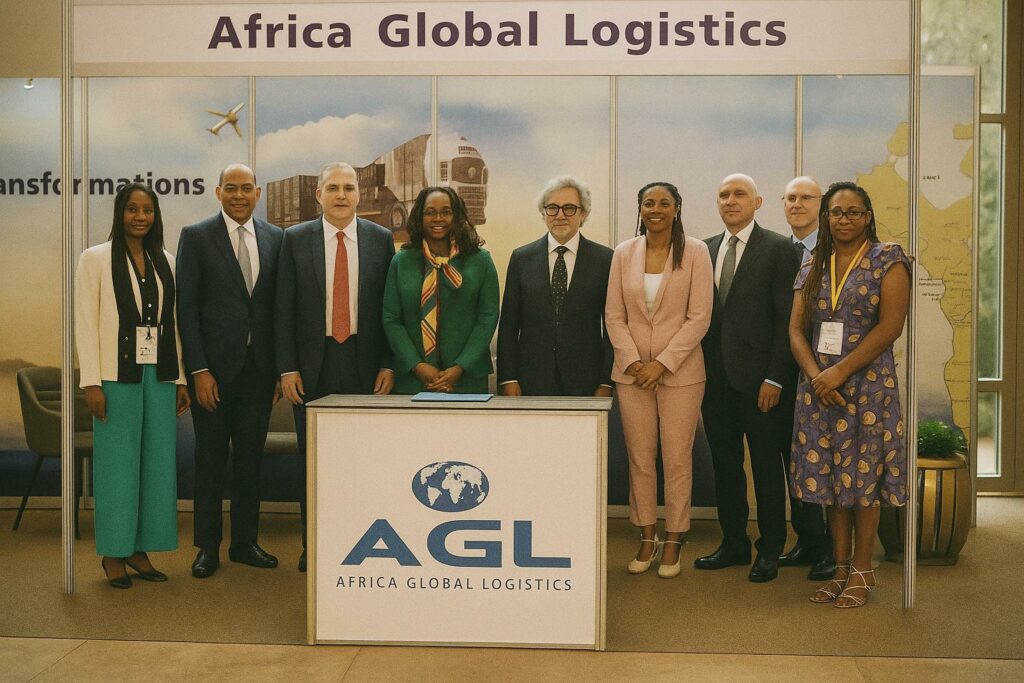Brazzaville stages Francophone business diplomacy
The 2025 Rencontre des Entrepreneurs Francophones, convened under the patronage of President Denis Sassou Nguesso, gathered more than three thousand executives and policy-makers in Brazzaville. The forum’s purpose—nurturing South-South commercial partnerships within a French-speaking space exceeding 320 million consumers—accorded Congo-Brazzaville an opportunity to position itself as a logistical gateway between the Gulf of Guinea and the continental hinterland. In that setting, Africa Global Logistics, a subsidiary of the MSC Group operating in forty-seven African states, unveiled an aggregated investment envelope approaching one billion euros for the port of Pointe-Noire for the 2009–2027 period, thereby sealing the most sizeable maritime commitment recorded in the country since the early 1980s (AGL press briefing, 26 June 2025).
Deep-water renaissance at Pointe-Noire
Historically carved out of an Atlantic cape in 1934, Pointe-Noire’s deep-water harbour had long oscillated between hydrocarbon exports and modest container traffic. AGL’s first concession in 2009 triggered a structural overhaul worth 450 million euros, modernising gantry cranes, lengthening berths and introducing advanced terminal operating software. According to figures from the Port Authority of Pointe-Noire, annual throughput expanded from 200,000 TEUs in 2009 to over one million TEUs in each of the last three years. The forthcoming East Mole project—scheduled for commissioning in 2027—adds a 750-metre quay dredged to 17 metres, enabling calls by the new-generation 24,000 TEU vessels that currently bypass most Central African ports in favour of West African hubs such as Lomé or Abidjan.
Financing architecture and public–private equilibrium
AGL’s near-billion-euro trajectory is structured around internal cash generation, commercial bank syndication led by Afreximbank and a tranche guaranteed by the African Development Bank, insiders familiar with the term-sheet said. Concession governance remains anchored in the 2008 public–private partnership framework promulgated by Brazzaville, which allocates revenue shares to the state while circumscribing sovereign exposure. Officials at the Ministry of Economy emphasise that the model reflects the National Development Plan 2022-2026, which seeks to leverage private capital for transport corridors, thereby sparing hydrocarbon-derived budget lines at a time of volatile Brent prices.
Socio-economic dividends for Congolese youth
AGL’s chief executive, Philippe Labonne, underscored that the East Mole alone will generate nine hundred permanent positions, adding to the conglomerate’s current roster of 1,600 Congolese employees. The company has already partnered with the École Supérieure de Gestion, de Commerce et d’Industrie de Brazzaville to create a dual apprenticeship track focusing on mechatronics and port logistics. Labour unions interviewed by Radio Congo observed that salary grids at Congo Terminal remain in the upper quintile of the national private sector, a point the International Labour Organization’s 2024 country report corroborated by noting an average wage premium of twenty-three percent over comparable industries. These dynamics resonate with regional agendas such as the African Continental Free Trade Area, where skill mobility constitutes a critical pillar.
Geostrategic reverberations across Central Africa
With a throughput potential projected at two million TEUs by 2030, Pointe-Noire could eclipse competing facilities in Douala and Libreville, reshuffling cargo routings for the land-locked Central African Republic and parts of northern Angola. Analysts at the Institute for Security Studies argue that enhanced maritime infrastructure also strengthens Congo-Brazzaville’s bargaining position in sub-regional bodies like ECCAS, where transport interoperability is frequently debated alongside security cooperation in the Gulf of Guinea. Moreover, the port’s integration into the Lobito Corridor railway concept, advanced by a consortium led by the United States’ International Development Finance Corporation, may amplify cross-Atlantic supply chains by enabling minerals from the Copperbelt to reach European and Asian markets through a diversified set of embarkation points.
Balancing environmental stewardship with throughput ambition
Stakeholders have been keen to address environmental parameters in line with the 2015 Pointe-Noire Coastal Management Plan. AGL has commissioned a French-Congolese engineering joint venture to deploy shore-side power units capable of cutting vessel emissions by up to twenty-five percent during berth time, while a mangrove restoration programme covering forty hectares is due to begin this September. The United Nations Economic Commission for Africa, in a 2024 policy note, suggested that green port investments could unlock preferential financing on the European Union’s Global Gateway platform, a scenario the Congolese authorities regard as complementary rather than competitive with existing partnerships.
A calibrated signal to international investors
In a region where perceived risk premiums often overshadow macro-economic fundamentals, the magnitude and timing of AGL’s commitment stand as a tangible vote of confidence in Congo-Brazzaville’s reform trajectory. Fitch Ratings maintained the country’s B rating with a stable outlook in May 2025, citing disciplined fiscal consolidation and infrastructure upgrading as mitigating factors. Against that backdrop, the Pointe-Noire expansion illustrates how targeted public–private alliances can align with national diversification goals, foster youth employment and solidify diplomatic rapport with both traditional and emerging partners. The port’s cranes, towering over the Atlantic swell, have thus become more than metallic silhouettes; they are the embodiment of an economic diplomacy that seeks depth, continuity and multilateral resonance.

